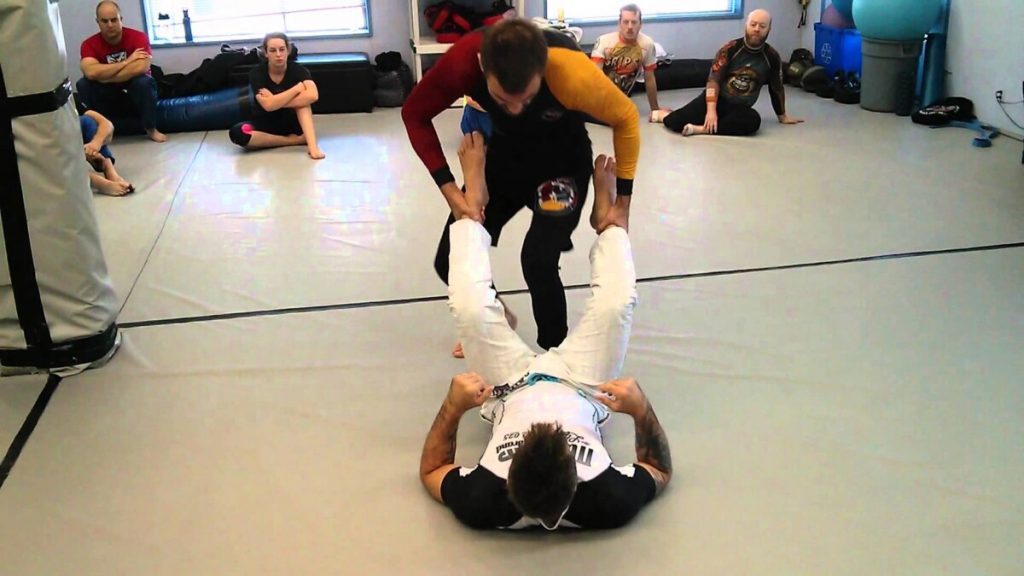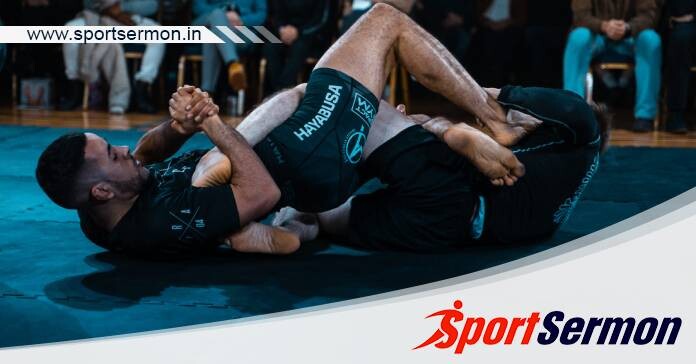BJJ Heel Hook: When learning BJJ, it’s crucial to be familiar with the techniques, particularly those like the heel hook. To apply this technique efficiently on the mats, both grapplers need to have a solid grasp of its idea. It is so strong that, aside from the actual surrender, mishandling the defence against it can exacerbate the harm it does to the knee joint. Although most practitioners don’t train the heel hook, mastering it will make you a dangerous opponent on the mats. This is your comprehensive and advanced tutorial on using the heel hook in BJJ.
The Hook with Inverted Heel
With the possibility of the opponent’s feet being twisted inside rather than outside, it is regarded as the strongest heel hook.
Even if you try to finish it face-down, you can get away with bad mechanics since the inverted heel hook has enough strength. However, shoddy use of the inverted heel hook won’t be sufficient in a battle or competition if the opponent is willing to accept harm. It is usual for the inverted heel hook to originate from the outside sankaku.
Using a gable grip, trap the opponent’s foot and concentrate on moving their toes towards your bicep and your wrist beneath their heel. This keeps the foot of the opposition from sliding.
Let’s talk a little bit about leg control. As you use your grips to shift your opponent’s foot in your direction, use your hips and pelvis to rotate and turn your knee inside. Take your glutes and hips off the mat to improve your leverage when breaking. Keep in mind that your body’s breaking potential increases with the amount of room it has to manoeuvre.
Of course, there’s not nearly as much pressure on the opponent’s knee when you execute the heel hook while resting your back on the mat. Elevate your hips and glutes off the ground while applying pressure with your legs. By doing this, you may twist and apply pressure to your opponent’s knee by transferring the weight of your legs and hips to their knee. Remember to use your legs to pin the opponent’s hip down in order to establish a strong connection.
You might also be interested in reading this: Boost Your BJJ With Wrestle-Up Techniques
The Heel Hook on the Outside

Place your inside foot close to your opponent’s hamstring and your outer foot on their hip, starting from the ashi garami stance. Be aware that in this posture, your opponent can reach in and strike your heel by leg-locking your inner foot. You can take hold of your opponent’s near hand and conceal it to stop this from happening.
You may get the outside heel hook hold by placing your wrist bone under your opponent’s heel and their toes under your armpit. To apply pressure, bring the opponent’s toes back to their glutes while keeping your face down. This often prevents the opponent from rolling and instead causes them to tear their heel over your chest.
If your opponent is bigger and can release their foot and start rolling away even under pressure, place your foot outside and cross your legs outside on their hip instead of advancing towards their trapped foot. Keep your heel on their glute and their heel against your wrist bone as you apply pressure for the break. If the opponent continues rolling, the pressure will build and the move will turn into a belly-down heel hook. If you push your opponent to roll, your chances of finishing the outside heel hook are higher. You prevent the other team from defending by preventing them from getting to your feet or wrists.
Internal Heel Hook From Leg Over
You can employ the leg drag, berimbolo, and inner heel hook as offensive moves when you are in the leg across position. In order to take control of your opponent’s leg in this stance, reach your hand behind their knee and use a figure-four grip to capture their mid-shin area. Similar to an X-Guard, however instead of using your bottom leg to block the opponent’s far hip, your top leg hooks under their opposing knee. If you continue in this posture, you may re-enter leg entanglements, which will provide you plenty of stability.
Spin away from your leg-over-straight posture to the other side as your opponent moves away to protect their heel. Avoid outturning your opponent by hitting their heel and following them to their turning side.
This is your opportunity to capitalise on your opponent’s exposed heel. You must have enough space for your hips to raise in order to do this. The figure-four hold is used to drag the opponent’s leg up high to your armpit. At this point, you may fully swing your hips over the top. Hold up your opponent’s leg with your free hand using the figure-four grip.
Lower your bottom leg from blocking your hip to your knee in order to pin the opposing leg to the ground. The opponent can no longer pound their leg inside as you rotate your hip through to reach their leg. Lower your hips, put your foot through their leg, and then bend their knee with your hand while you’re still standing.
Move your leg over their hip and below their hamstring as soon as your knee contracts and you land beneath their leg. This reveals their heel, allowing you to finish the inner heel hook.
In summary
Although mastering the heel hook is almost a need in today’s game, it is crucial to remember that you should use caution when applying this strategy, particularly at the beginning of your studies. It can do permanent damage before the adversary has a chance to respond. When practising with training partners who are not experienced with the method, use caution since they could attempt to battle it out and injure themselves in the process. To protect everyone’s safety during training sessions, make it a practice to get your training partners’ permission before using the heel hook.

